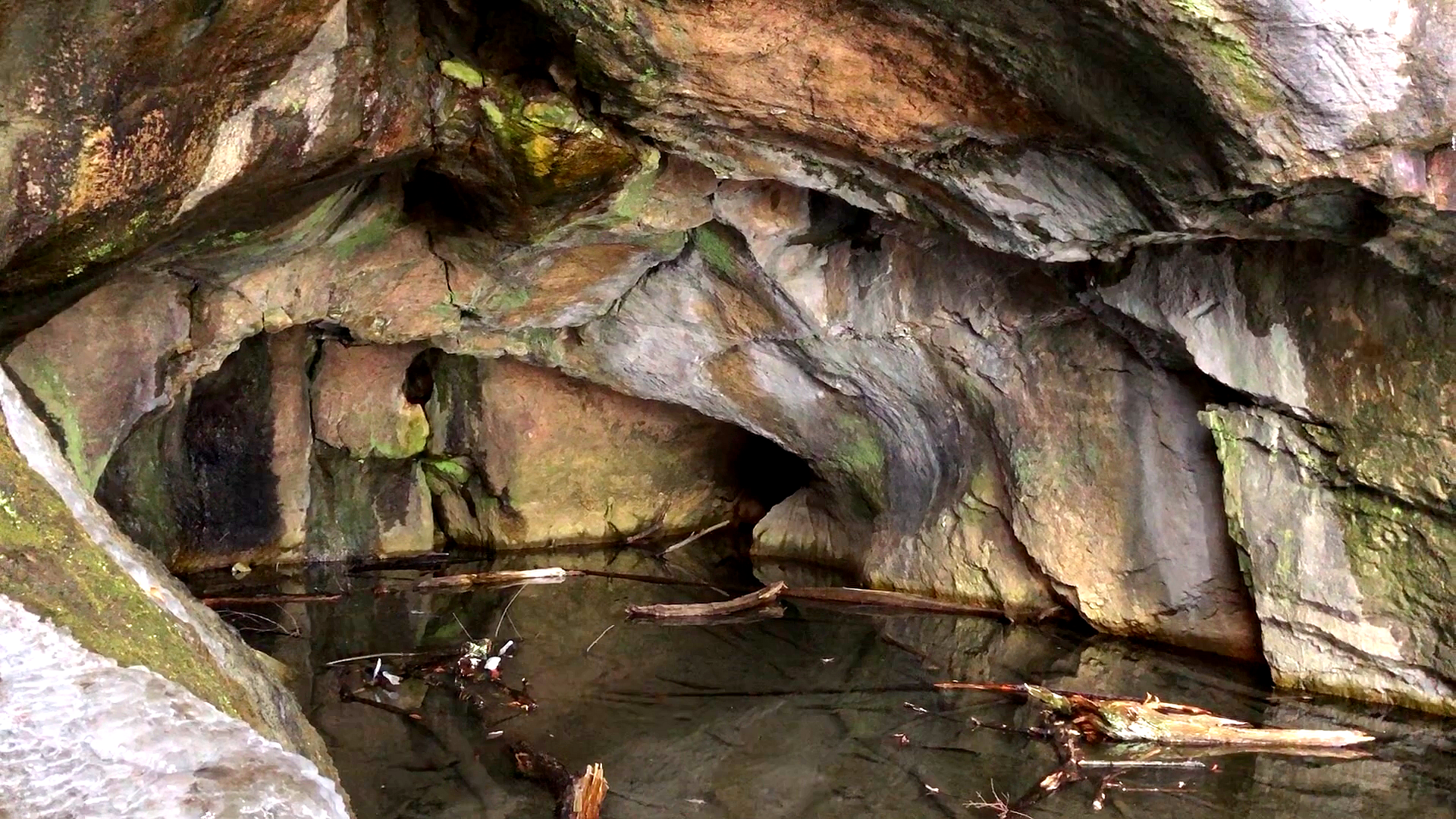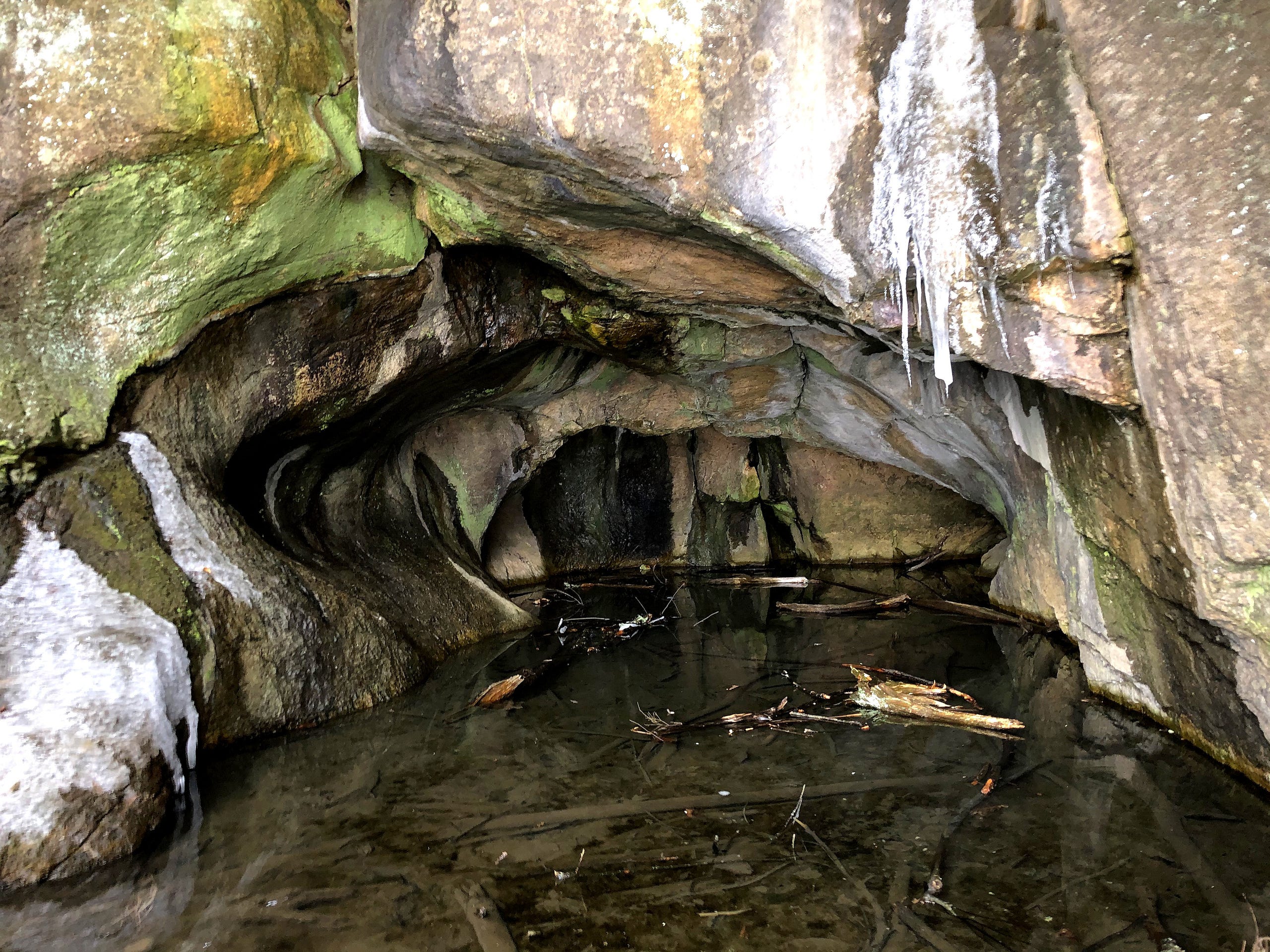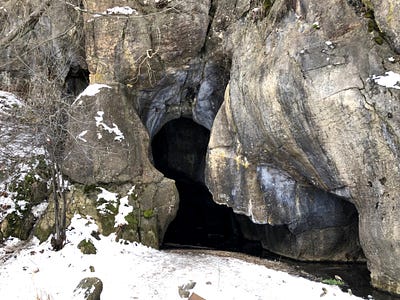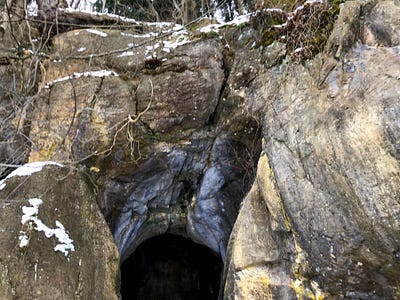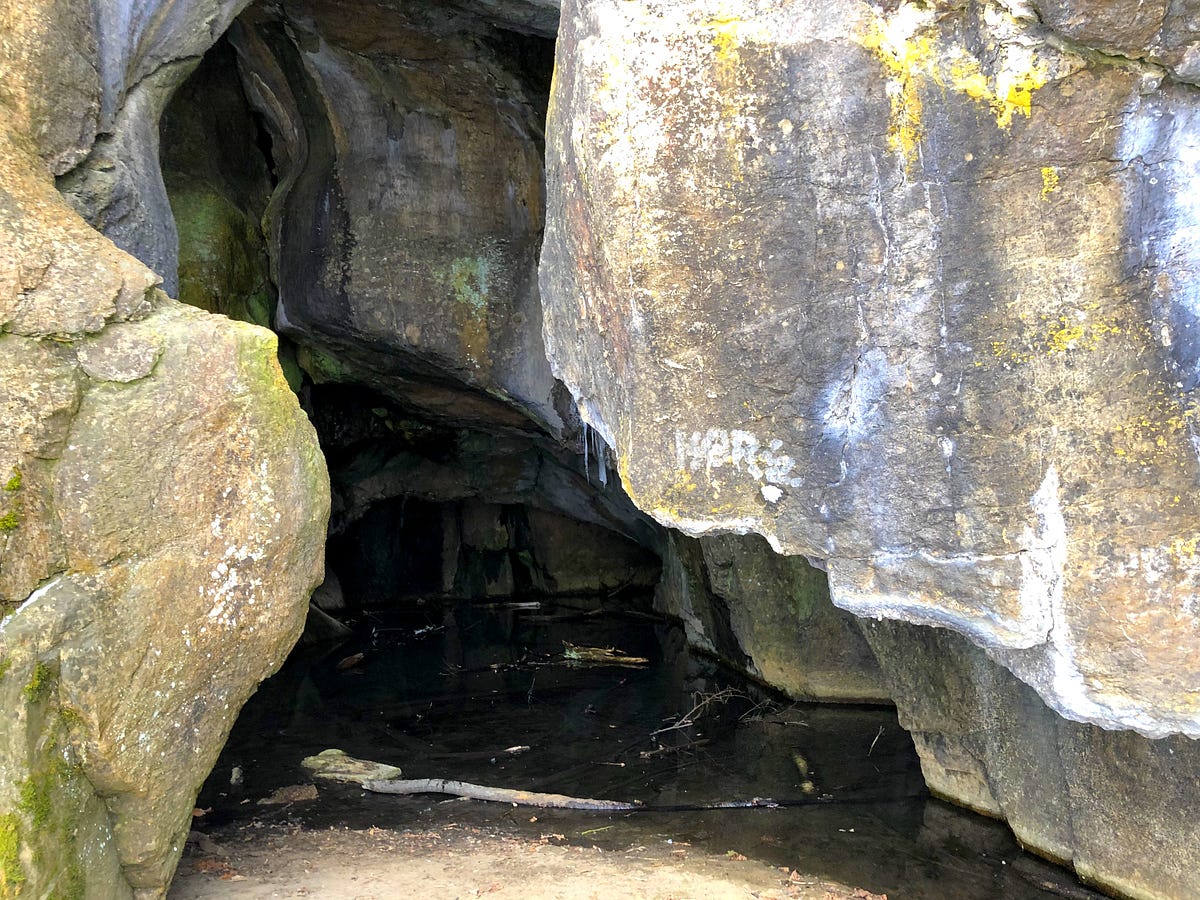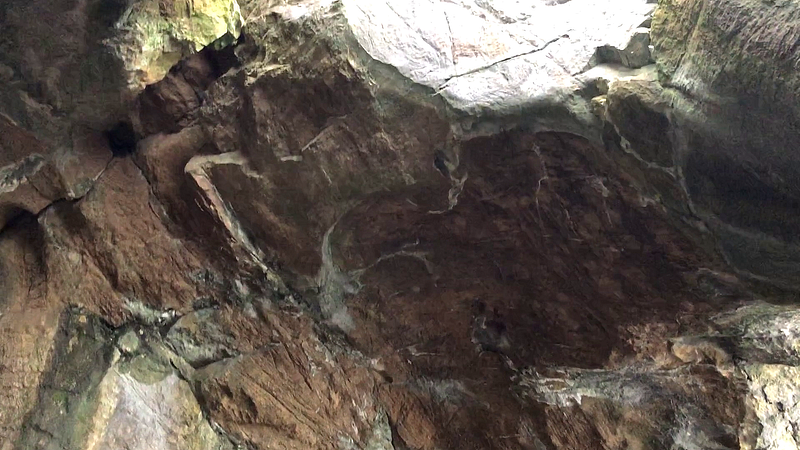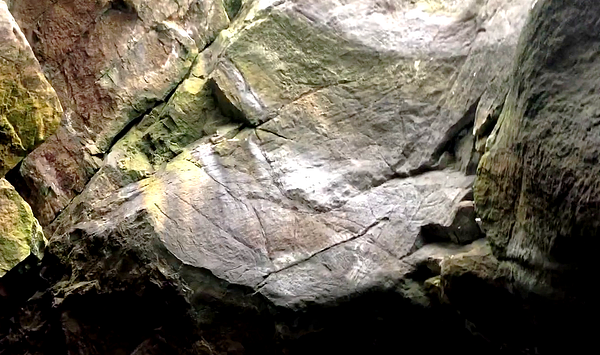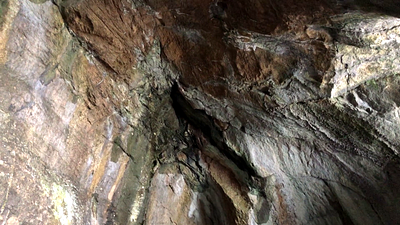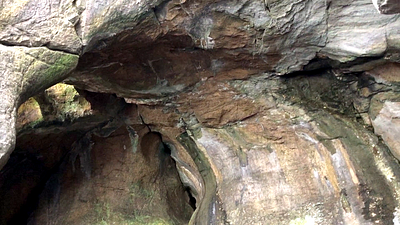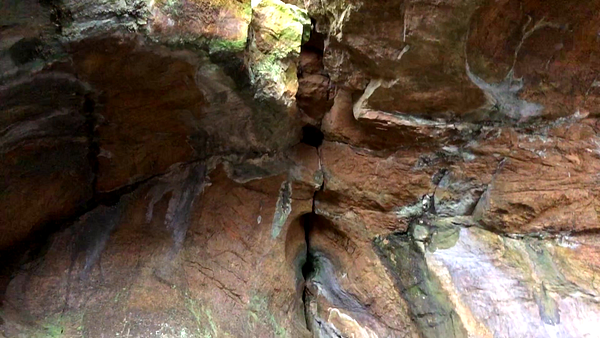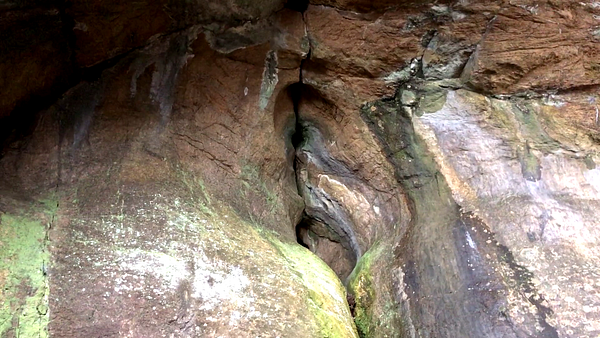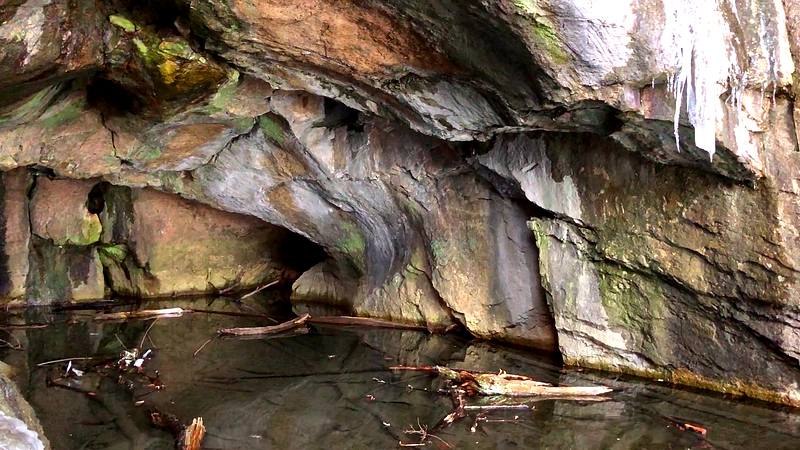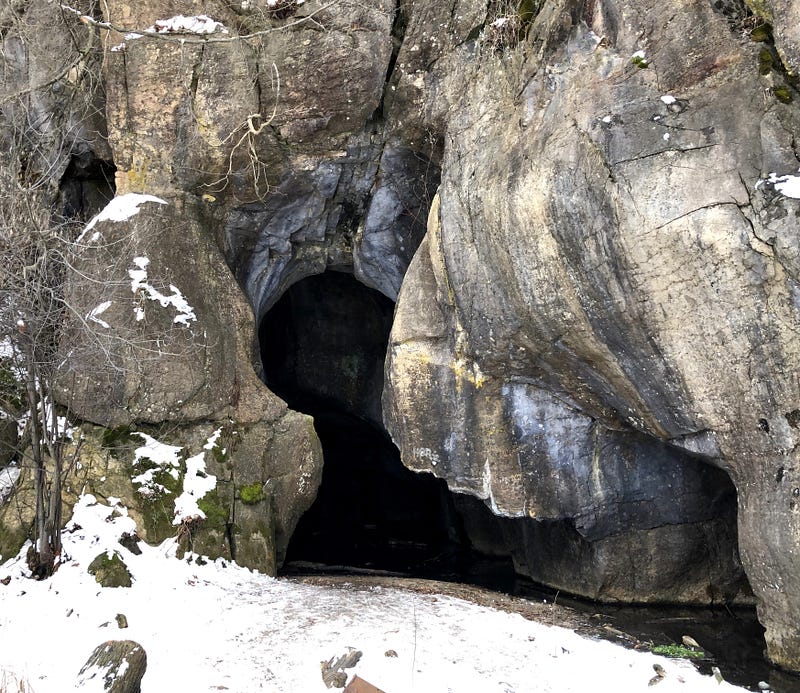The Donahue Sea Caves’ Ancient Beauty
DONAHUE SEA CAVES, ARTHUR PARK, BURLINGTON, VERMONT —
The Devil’s Den?
These days, it’s the Donahue (or Intervale, or Burlington) Sea Caves, found on Long Pond in Arthur Park, on the edge of the wetlands in Burlington’s Intervale. It’s only accessible on foot during the winter, when the pond freezes over. Been meaning to explore the site since learning of the Sea Caves’ existence a few years ago. This week, I finally made my way over there.
The Arthur Park trailhead is behind a bust stop, next to some condominiums, across North Avenue from Burlington High School. May seem odd to find an ancient natural wonder in a neighborhood, but that’s the nature of Vermont — even at it’s most “citified”, the natural world lurks around the corner. Or down the hill, behind some condos.
Heading down a snow-covered trail and out over the pond’s ice, I soon found my way to the keyhole-shaped cave entrance, carved out by glaciers in eons past. The water in the cave itself was not yet frozen, unfortunately, so I was confined to the entrance and the left side.
Native American Shelter
You didn’t always need to wait until winter to access the cave. Before they divided the Intervale wetland with the Route 127 Beltway, mid twentieth-century, this wasn’t a pond but a part of the Winooski River delta wetlands connected to Lake Champlain. It drained, some, and you could walk up to the cave.
And Native Americans did for years:
“For thousands of years, Native American communities farming, fishing, and inhabiting the Winooski River’s Intervale took advantage of the Sea Caves’ natural shelter. The moderating temperatures and protection from the prevailing wind made the site a perfect meeting location and storehouse.
“In the winter, families congregated in the caves to find a warm retreat from the season’s most bitter temperatures. In the summer, the caves were a favored storehouse for goods like dried fish and corn, critical commodities traded by the local Winooskiok Abenaki community.” From the city’s EnjoyBurlington.com.
The site offers this from Burlington writer Levi Smith, writing in 1907:
“In few places does nature reveal herself in so many and such diverse aspects as here at the Devil’s Den. On the one hand a sense of grandeur, a great cave which stretches back into darkness spanned by massive vaults and arches of weather beaten rock which ascend in unbroken curves and cast dark shadows and reflections in the water at their base… The approach to the Devil’s Den, although at certain times of the year a bit boggy and difficult is not entirely without charm.”
Sounds like it’s a much pleasanter place to be this time of year than in the boggy, swampy, mosquito-infested summer. Still, you can probably kayak in close to the cavern when the water is high enough in warmer months.
The fact the place came to be called the “Devil’s Den” by colonial settlers is certainly curious — and seems to associate the cave with Native Americans. That appellation could also indicate this was a holy or sacred space to them, as the prejudices of late 18th century European settlers led them to label many places sacred to indigenous peoples as belonging to “Satan” or “The Devil”.
The stone here is our local Dolostone, and the colors are natural. This is pure speculation, but there are places near the top of the roof of the cave which look like they could have once featured indigenous art, where there are also gashes, lines in a row, as if something was destroyed. A name like the Devil’s Den makes me wonder.
Sea Caves?
As it turns out, this natural work was likely not done by the waves of the Champlain Sea, as once assumed, but instead by erosion and glaciers, or the raging Winooski River as it settled, as the Sea became Lake Champlain:
“Experts disagree about how the cave was formed. University of Vermont geologist Stephen Wright thinks water dripping through cracks in the bedrock dissolved the rock and formed the cave, and then the cave was ‘fortuitously exposed’ when a glacier eroded the surrounding rock. Naturalist Sean Beckett thinks it was created by an ancient Winooski River channel cutting down through the sand of its old delta ‘like a knife through butter’ and wearing away existing cracks in the bedrock until it formed the smooth cavern you see today.” from SevenDaysVT.com.
So, in reality, not made by the sea. And? There only seems to be the one cave. Apparently, “Sea Caves” is as much a misnomer as is “Devil’s Den”.
Whatever we call it, the cavern is still a beautiful, hidden — yet accessible — gem, just a little off the somewhat beaten paths of Burlington,Vermont.


